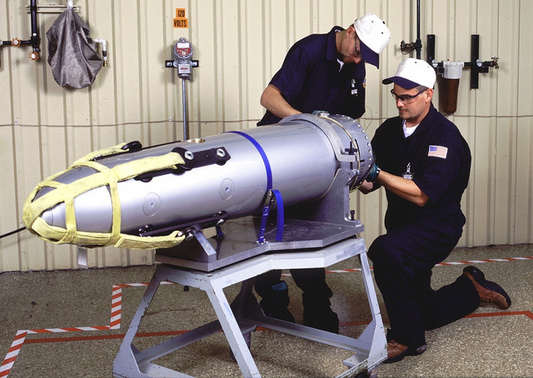 It is widely agreed that compliance with arms control agreements can be best assessed with a robust verification regime. Progress towards deep cuts in nuclear arsenals and eventual nuclear disarmament will at some stage, perhaps soon, require verified dismantlement of nuclear warheads and disposition of fissile materials. There is growing recognition that new cooperative monitoring techniques and procedures will need to be developed to meet this verification goal.
It is widely agreed that compliance with arms control agreements can be best assessed with a robust verification regime. Progress towards deep cuts in nuclear arsenals and eventual nuclear disarmament will at some stage, perhaps soon, require verified dismantlement of nuclear warheads and disposition of fissile materials. There is growing recognition that new cooperative monitoring techniques and procedures will need to be developed to meet this verification goal.
Ideally, verification techniques and procedures should be "ready to go" when arms control negotiators require them. The value of being ready is evident from the work of the Group of Scientific Experts, which developed the technologies to monitor a nuclear test ban. The group began its work two decades before negotiations on the Comprehensive Test Ban Treaty started, making it possible to reach consensus on verification provisions fairly quickly once treaty talks were underway.
Warhead verification in the context of disarmament has been an enduring concern in this journal, starting with the article in the very first issue twenty five years ago, by Theodore B. Taylor in "Verified Elimination of Nuclear Warheads," (Science & Global Security 1 (1989): 1-26), that looked at possibilities for verified dismantlement and elimination of nuclear warheads. The articles collected in this special issue of Science & Global Security, with Malte Göttsche from University of Hamburg as guest co-editor, explore several different approaches to warhead verification. Taken together, they offer new ideas and a measure of the work still to be done in this area and hopefully may help generate additional and much-needed research.
In "Measurement Techniques for Warhead Authentication with Attributes: Advantages and Limitations" (Free PDF), Malte Göttsche and Gerald Kirchner from the University of Hamburg's Carl Friedrich von Weizsäcker Centre for Science and Peace Research examine the capabilities of passive and active neutron and gamma measurements to confirm the presence, mass, and isotopic composition of fissile material (plutonium and highly enriched uranium) in nuclear warheads. These measurement techniques are a key part of what has come to be called the "attribute approach" to warhead verification, in which an inspection system checks whether the inspected item meets a pre-defined attribute (e.g., presence of more than 2 kg of plutonium). The article concludes that it may be more difficult to authenticate a fully assembled warhead (which may be shielded) than a warhead's fissile material components and that measurement techniques for plutonium component attributes are better developed than for uranium components, though limitations of all techniques should be further studied.
The other two articles in this issue focus on inspection techniques that are not based on radiation measurements. While not sensitive to isotopic composition, these techniques can also provide complex signatures that are very hard to spoof while being much less intrusive than standard radiation measurements. They could provide an important complementary tool and be particularly valuable for chain-of-custody applications.
Kyle J. Bunch, Mark Jones, Pradeep Ramuhalli, Jacob Benz, and Laura Schmidt Denlinger ("Supporting Technology for Chain of Custody of Nuclear Weapons and Materials Throughout the Dismantlement and Disposition Processes") discuss electromagnetic and acoustic verification technologies under development at the U.S. Pacific Northwest National Laboratory. One particular concept examined generates low-frequency electromagnetic signatures using an induction coil and effectively providing an impedance measurement of a containerized item. The authors find that the acquired signatures are unlikely to contain sensitive information.
The third article in this issue is "The Use of Modal Testing within Nuclear Weapon Dismantlement Verification" by Helen White, Philip Daborn, Paula Hayden, and Philip Ind from Britain's Atomic Weapons Establishment Aldermaston. It reports experiments using resonant vibration analysis as a tool for tracking containers that might hold an intact or partially dismantled warhead, a fissile material component, or fissile material from a dismantled component. The article demonstrates how a vibration pattern can offer a unique signature that allows inspectors to maintain a chain of custody of a given container that may be difficult to spoof and can even detect if a container has been moved between inspections, all without revealing sensitive information.
The final contribution to this issue is a review of The Soviet Biological Weapons Program, a book by Milton Leitenberg, Raymond A. Zilinskas, and Jens H. Kuhn (Harvard University Press, 2012). In his review, W. Seth Carus of the U.S. National Defense University describes the book as, "one of the most important books on biological warfare ever published, and one of the best historical accounts of a biological weapons program" and of interest to readers concerned about "biological warfare, arms control, or the management of science in support of national security."
